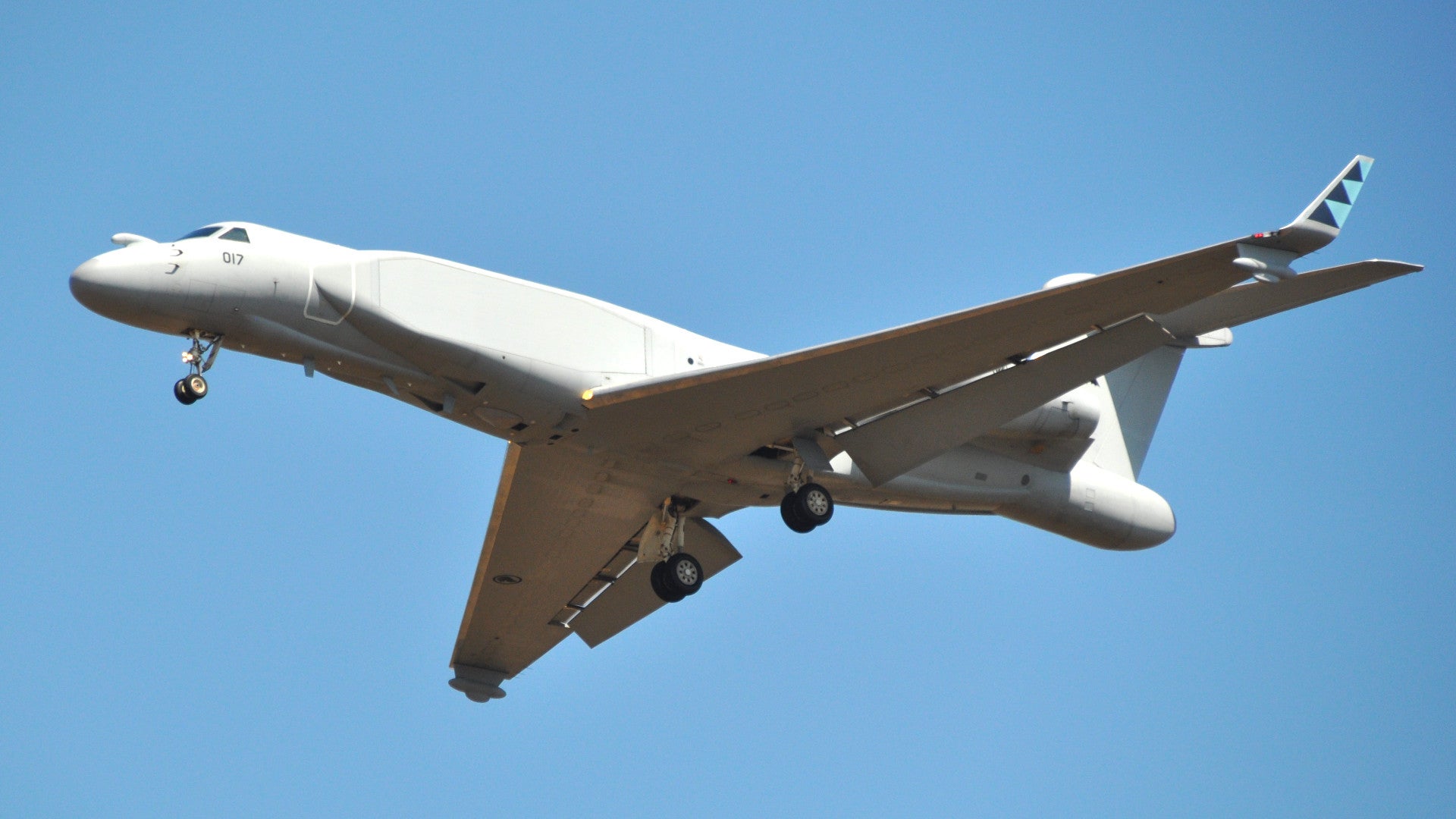After weathering Congressional backlash and industry protests, the U.S. Air Force has awarded a contract for new jamming aircraft based on the Gulfstream G550 business jet. The decision puts the service on a road to finally replacing the aging, but important EC-130H Compass Call fleet and could prompt an increasing use of similar aircraft for specialized missions throughout the U.S. military.
On Sept. 7, 2017, the Air Force confirmed it had signed the long awaited deal with L3 to migrate the Compass Call equipment onto a new plane. As part of the plan, the defense contractor had the authority to choose the final platform, in this case the G550.
“After their analysis and sharing that with the program office, L3 has decided to use the Gulfstream 550 Airborne Early Warning (AEW) aircraft as the new platform,” Air Force spokesperson Ann Stefanek said, according to DOD Buzz. “This new Compass Call platform is being referred to as EC-X.”
The total value of the project remains unclear, as the contract is a so-called “undefinitized” arrangement that puts L3 to work immediately while it negotiates the final price tag with the Air Force. At present, there is not apparent intention to make significant modifications to the Compass Call capabilities, with the primary goal simply being to move the systems onto a newer aircraft.
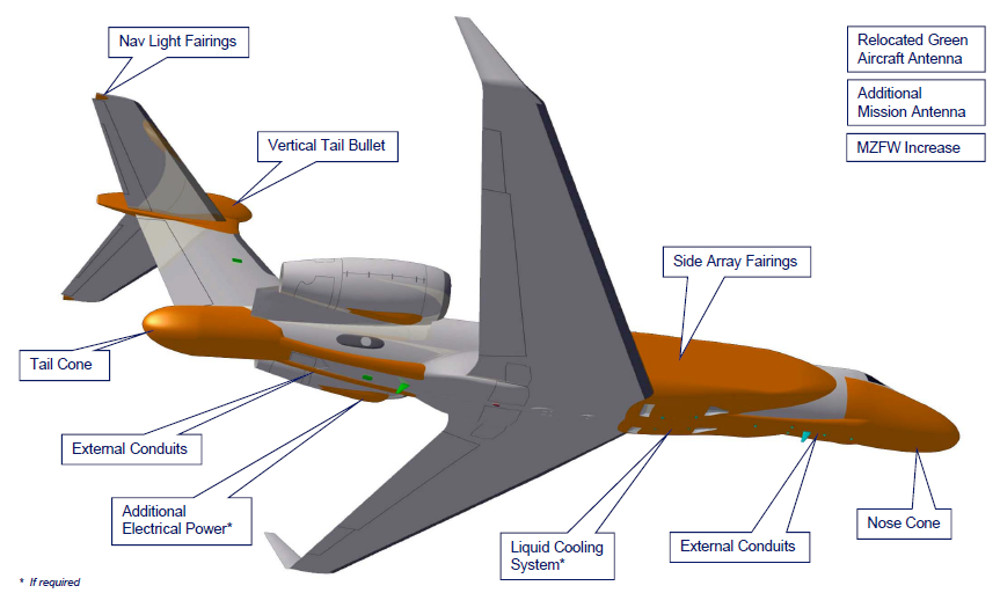
The Air Force received the first EC-130H aircraft, based on the C-130H Hercules cargo aircraft, in 1982. Since then, the service has put the 14-aircraft fleet through two major modernization cycles, as well as adding a host of minor improvements.
The aircraft’s exact capabilities and nature of the modifications are classified, but Compass Call’s mission is to disrupt enemy communications, radars, and other electronic emitters, both in support of air and ground operations. Most recently, the EC-130Hs have been flying over Iraq scrambling ISIS’ radios and cell phones and possibly preventing improvised explosive devices from going off and knocking down
Since they have the ability to spot and track various signals in order to jam them, the Compass Call system also has the ability to provide limited intelligence on enemy positions and movements. Even before the U.S. military began its campaign against ISIS started in 2014, EC-130Hs had already flown more than 60,000 flight hours in both Iraq and Afghanistan in the preceding decade.
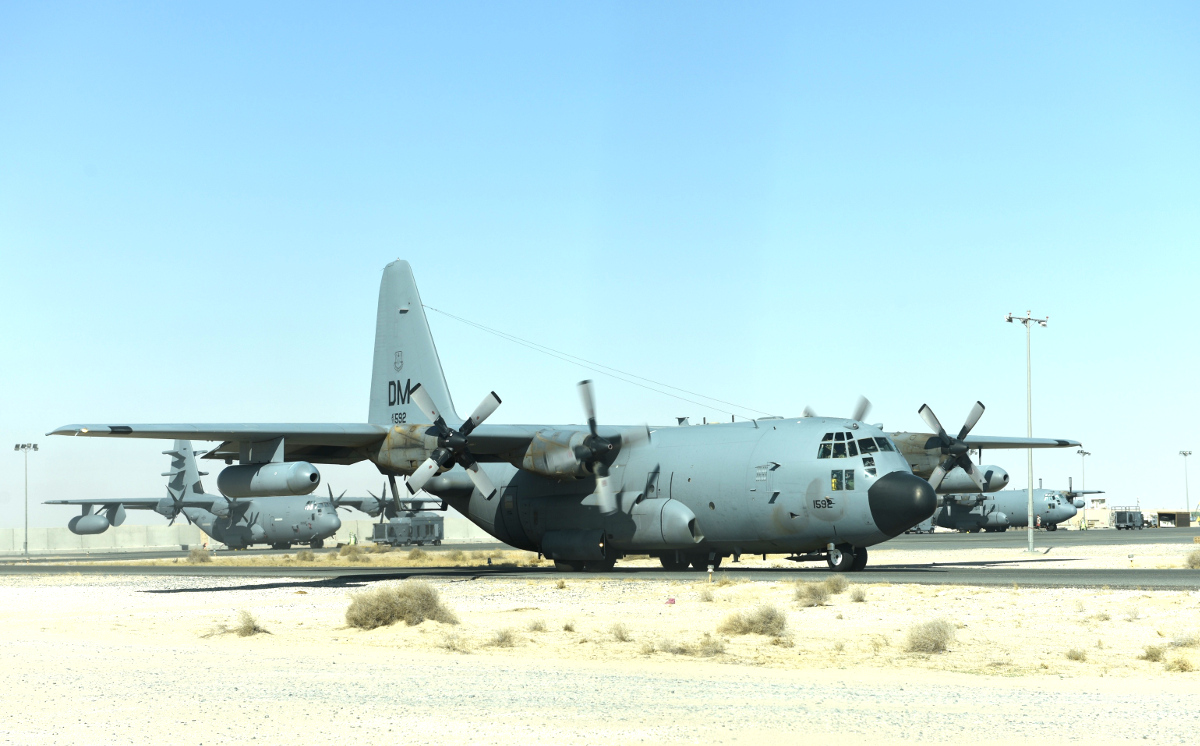
Unfortunately, as important as they’ve been, the aircraft are getting older and more difficult to maintain. At one point, the Air Force even considered scrapping half the Compass Call fleet without any immediate plans for a replacement.
It then faced opposition from members of Congress over subsequent plans to award a sole-source deal straight to Gulfstream for a new platform, which it referred to in 2016 as the EC-37B. The U.S. Air Force, Navy, and Coast Guard operate a number of earlier Gulfstream Vs and G550s as VIP transports under the designations C-37A and C-37B respectively.
The legislators, especially those from states that are home to other aircraft manufacturers, pressed for a competitive process, instead. The Air Force countered with a unique plan to hire L3 to come up with a modernization solution and pick the aircraft itself. The service was already paying the company to maintain the existing EC-130Hs.
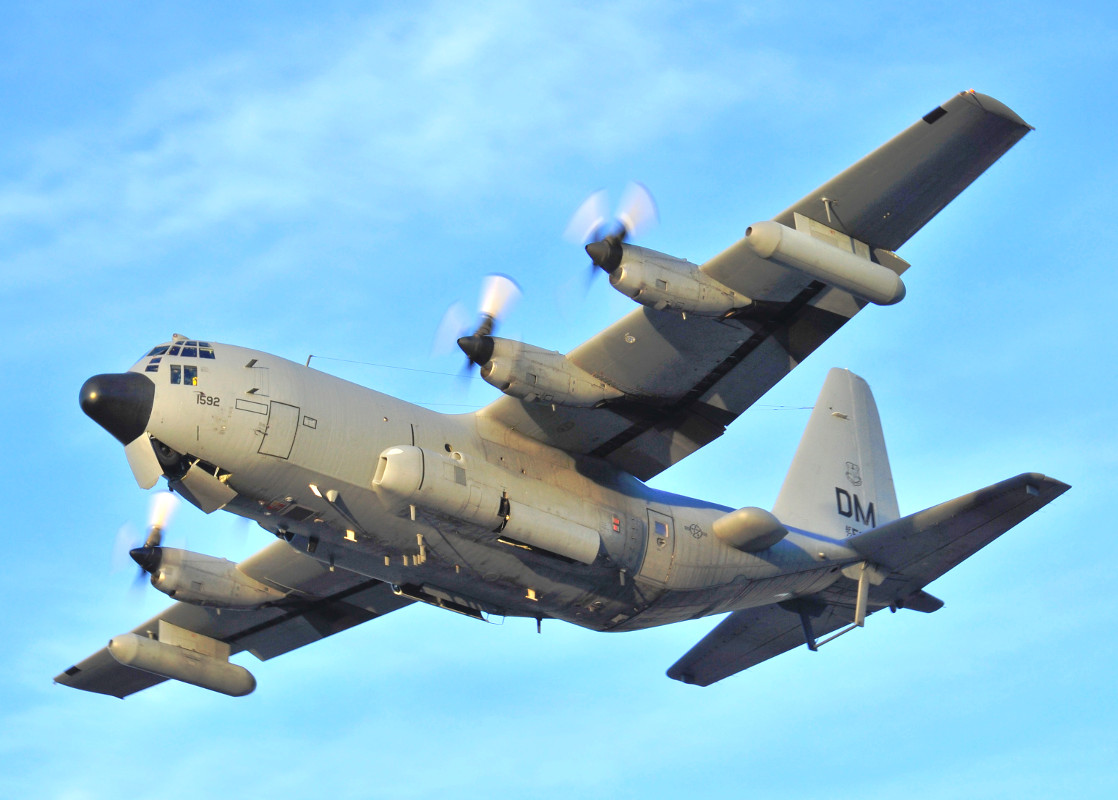
Despite protests from American plane maker Boeing and Canadian aircraft manufacturer Bombardier, who had hoped to pitch versions of their 737 and Global 6000 aircraft respectively, the Air Force has succeeded in moving ahead with the project. On Aug. 25, 2017, the Government Accountability Office, a top Congressional watchdog, rejected formal protests from both firms, which had in part asserted that L3 would be unduly biased in favor of the G550 based on its own history of work with Gulfstream.
Of course, the use of Gulfstream 550s or other business jets for special missions, including airborne early warning and control and intelligence gathering, is hardly new. The Gulfstream’s own Special Missions Department previously worked with Israel Aerospace Industries (IAI) to develop a platform for exactly these roles for the Israeli military, which became known as the Conformal Airborne Early Warning (CAEW) aircraft, the plane now slated to serve as the a basis for the Air Force’s EC-X. Italy and Singapore now operate their own derivatives using the CAEW airframe and Australia is in the process of acquiring its own G550-based electronic warfare aircraft.

But whether or not the process was appropriate, the decision could have implications for various special mission aircraft projects going forward. In general, relatively small business jet type aircraft like the G550 are becoming increasingly cost-effective, thanks in no small part to steady improvements in jet engine technology.
Moving Compass Call onto this sort of platform follows the U.S. Navy’s plan to replace its old NP-3D “Billboard” aircraft with a new plane using the Gulfstream G550 special mission design, which some have referred to as the NC-37B. These aircraft monitor missile tests and conduct other research, as well as keep an eye for unwanted visitors over the testing grounds.
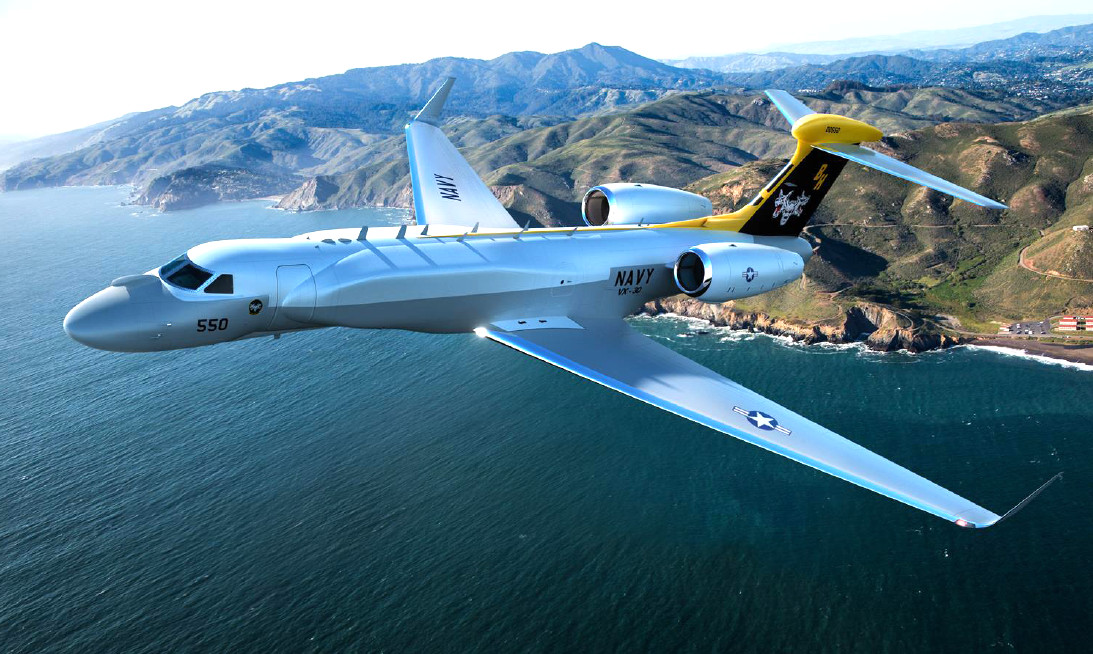
At the same time, L3 and Gulfstream have partnered with Northrop Grumman on a joint proposal in response to the Air Force’s competition to recapitalize the E-8C Joint Surveillance Target Attack Radar System (JSTARS) radar aircraft. The team’s pitch also uses the G550, but with a single ventral “canoe” to hold the powerful radar rather than the CAEW’s various radomes. Still, there is commonality between the two aircraft, which could make the Northrop Grumman bid option more enticing.
Combined with the EC-X plans, Australia’s aforementioned plans to buy its own G550 electronic attackers could become a factor, as well. The Pentagon is facilitating that deal through the Foreign Military Sales process and combining it with any planned purchases for the U.S. military could only help drive down costs. The Air Force and other services have a vested interest in operating systems that share commonalities with allied equipment, as well, which makes combined operations simpler and safer in a crisis.
Any future business jet-based aircraft will join the Air Force’s small fleet of E-11A Battlefield Airborne Communications Node (BACN) communications aircraft, which are based on the Bombardier Global 6000. There are also a number of additional VIP business jets spread across the services, including the aforementioned C-37s and the secretive C-20Cs that support the president, among others.
There will likely be an increasing number of opportunities for business jets to take over other roles in the future, as well. This size of aircraft would easily offer a lower cost option over existing intelligence and surveillance platforms. They would definitely makes more sense than the existing practice of deploying heavy bombers for basic reconnaissance duties.
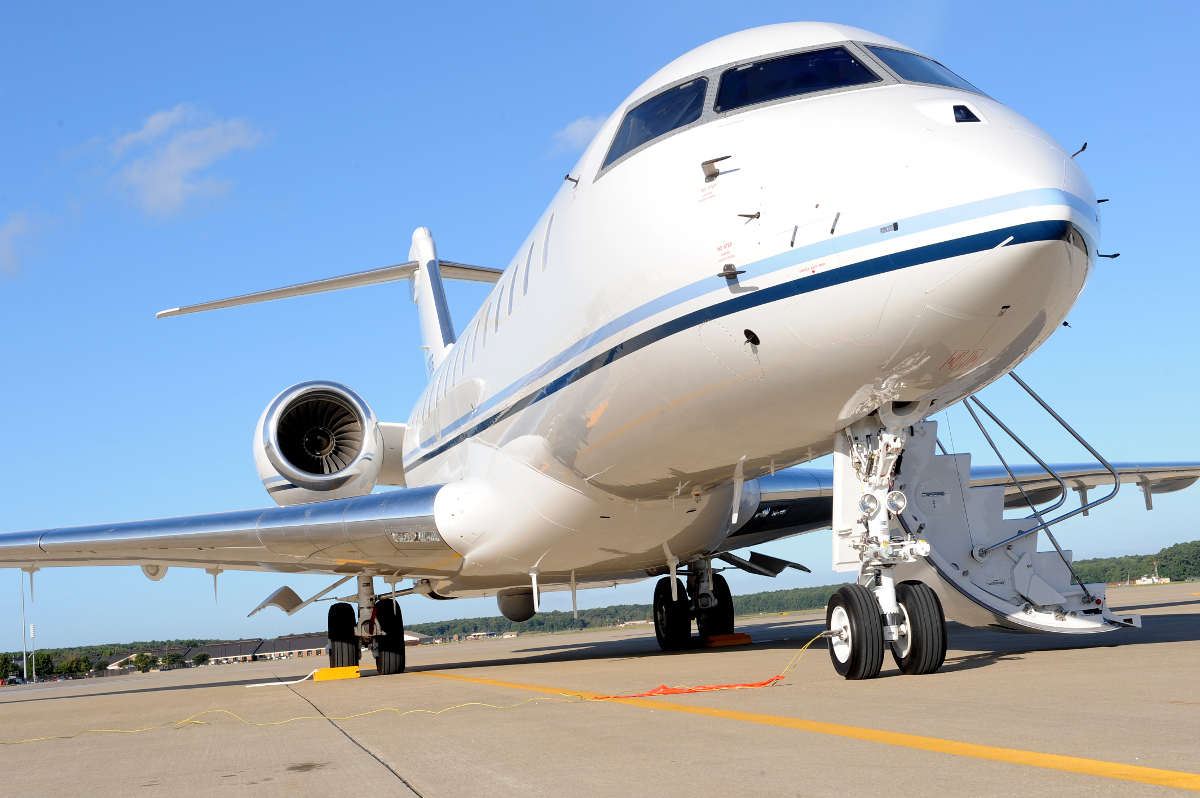
At present, the U.S. Army has committed to using second-hand Bombardier Dash-8 twin engine turboprops as the basis for its Airborne Reconnaissance Low-Enhanced intelligence aircraft, expecting to have these new RO-6A aircraft fully operational before the end of 2023. But the specific models the service is using are out of production, so there may eventually be a desire to migrate the systems over to a platform like the G550 just as the Air Force has done with Compass Call.
U.S. Special Operations Command is also exploring possibly options for a new manned intelligence gathering platform to supplement and potentially replace its own existing U-28A and Beechcraft King Air-based turboprop spy planes. In cooperation with the Air Force’s 645th Aeronautical Systems Group, the special projects office better known by the nickname Big Safari, SOCOM operates a single Dornier Do-328 twin engine turboprop, called Cougar, as a test bed for new sensors and other systems, too. There are even more secretive manned systems in operation that could eventually need replacement, as well.

A plane such as the G550 CAEW, especially if it is already in U.S. military service in other roles, would be an obvious option for any “next-generation” SOCOM airborne intelligence platform. The Air Force Special Operations Command’s existing use of civilian-style aircraft for discreet operations could make a business jet type even more attractive.
All told, it seems very likely that the new EC-X is part of a broader trend within the U.S. military that will see business jet sized aircraft increasingly take on more specialized missions.
Contact the author: joe@thedrive.com
